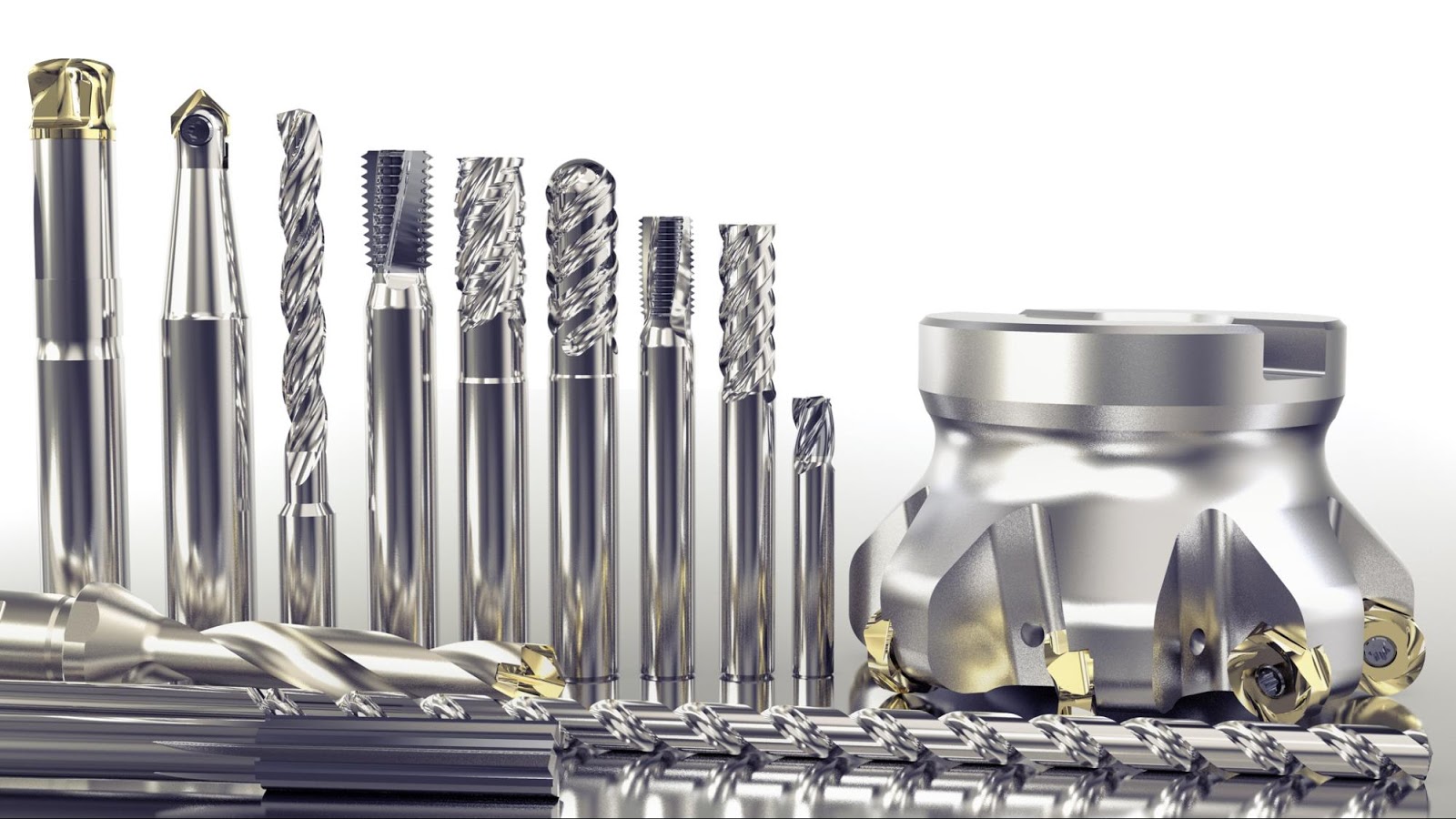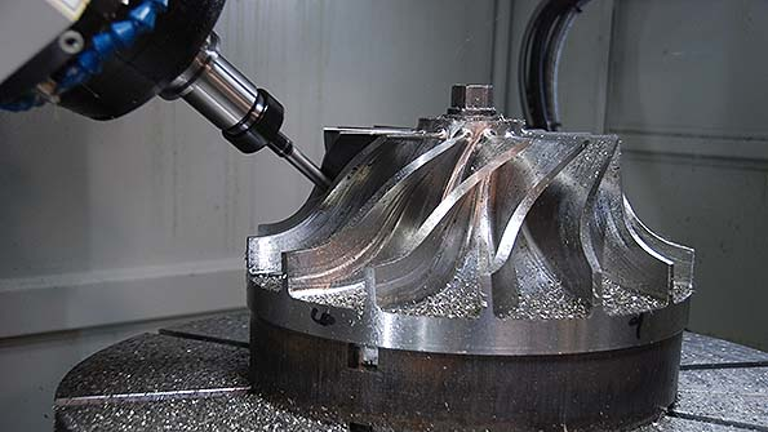Time to read: 5 min
Have you ever seen a beautiful piece of metalwork and wondered “how did they do it?” There are no seams, no signs of welding, and it appears as though it’s one piece. The surfaces are too complex to have been wrought manually, so what’s the secret? A 5-axis CNC machine. These machines have transformed the manufacturing world and led to advances in the automotive, aerospace, agriculture, and other industries.

What is 5-Axis CNC Machining?
There are 2 typical kinds of manufacturing machine processes: milling and turning. Milling removes material laterally in the +/-X, +/-Y, and +/-Z planes, and can remove material in all three planes with the right setup.
Turning removes material while the part is spinning, typically about the X, Y, or Z-axis (also referred to as A, B, and C). It only removes material around the axis upon which the part is spinning, so for complex parts, several different setups may be required.
Between these two manual processes, a maximum of 8 degrees of freedom can be achieved. On the other hand, 5-Axis CNC machines can remove material with 10 degrees of action in a single setup. This reduces setup time, run time, and scrap material and results in a cheaper, yet better quality product.
Additionally, the same tool on a CNC machine may be able to create different features around the 5 axes. If more than one tool is required, many machines have automated exchangers that work in concert with CAM software to switch tools in seconds. CNC machines not only efficiently utilize tooling to extend tool lifespans and save on tooling costs, but the machines can also tell you the remaining life of your bits. It’s good to know when you’ll have to replace a tool so you don’t lose any production time, right?

Advantages of 5-Axis CNC Machining
Through the capabilities of the 5-axis CNC, engines have become easier to manufacture by removing multiple, complicated setups. Since the 5-axis machines can perform incredibly complex movements, these modern engines can be milled to create more efficient chambers and produce a better flow of fluids. The automotive industry is, arguably, where these 5-axis CNC machines shine the most. They can pump out hundreds or thousands of the same component with inhuman accuracy, consistency, and speed. This ensures high quality replacement parts such as: wheel bearing housings, lug nuts, and internal engine components to name a few. Before, it was a gamble whether such replacement parts would fit correctly, simply due to human error in the production process.
In the aerospace industry turbines are among the most common components produced with CNC machines. Before the 5-axis, some turbines were modular and required assembly, which added costs and failure points. With their extraordinarily complex geometries and textures, what was once a heavily modular component, is now a single piece of artistic engineering.

Agricultural equipment, from the tractors themselves to the machinery they tow, have improved in functionality and cost with the advent of 5-axis machines. As with aerospace, parts are less modular, so modern tilling and cultivating equipment now has fewer parts (and points of failure) thanks to 5-axis milling. Plus, even intricate hose and pipe fittings can be run in large batches to bring down costs. And instead of waiting weeks for parts to arrive, a single replacement part can be shipped in a couple of days, which cuts down on repair and maintenance time. These improvements have helped farmers to be more productive and grow more crops in a smaller time frame.
Drawbacks of 5-Axis CNC Machining
While these machines have had a positive impact on manufacturing processes, the technology is not without its drawbacks — starting with CNC machine price tags that range from $60k to north of half a million dollars, depending upon your needs and configuration options. Different configurations include, but aren’t limited to: overall size and weight of the machine, tooling storage, required energy usage, and required calibration frequency. As a result, these systems aren’t meant for every factory floor. While a 5-axis CNC can increase production, it may be a poor long-term decision for the business.
Most CNC machines require maintenance contracts with the vendor at an additional cost, and due to their inherent complexity, not just anyone can properly service and maintain a 5-axis machine. Mechanical and electrical maintenance and machine programming is best left to a trained professional. Otherwise, DIY maintenance can turn the savior of your production line into the world’s most expensive paperweight.
Calibrating the machine is crucial to the success of any production, and tool height, work hold position, and home setting the axes are just a few of the calibrations needed. For example, if your work hold and home position are correct, but the tool height is not, you’ll bore too deep and send the tool head crashing right through your fixture! Correct calibration is the only method that yields the precision and tolerance these machines are known for.
Another critical characteristic to keep in mind before acquiring a 5-axis machine is floor space. If you must replace three standard mills or lathes to make room for one universal 5-axis, the tradeoff may not be worth it. Does your business need the precision, part repeatability, and complex geometry production that comes with these innovative milling machines? Are you simply replacing a dual setup operation with a single setup operation? Does your customer demand require faster turnaround times?

With the price, maintenance, and floor space required to run a 5-axis CNC, it’s important to do a cost-benefit analysis to determine if the added productivity and capabilities make up for the costs of acquisition and operation of the machine.
Conclusion
5-axis CNC machines have changed our lives. OEM components are now of greater quality while becoming less expensive. Engines run longer, faster, and more efficiently. We can process jobs with quicker setup times, increased accuracy and tolerance, faster cycle times, and less wasted material — all for the price of a new luxury car.
The benefits of CNC machining are legion, but you don’t need to buy your own machine when you work with China Manufacturing parts. Our CNC machining capabilities deliver tight tolerances with a variety of finishes and you can upload designs and receive parts in as little as two days.
Sign up for a free account and start turning your ideas into reality today!

